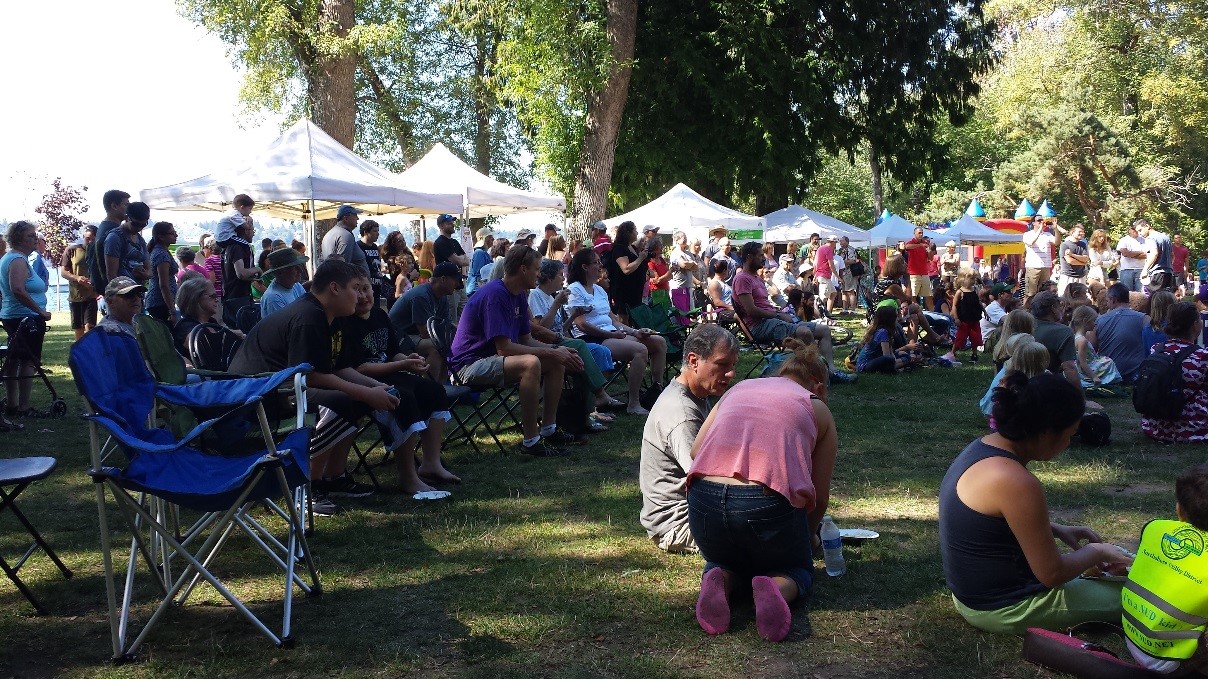2. Guiding Neighborhood Values
Finn Hill residents’ vision for their neighborhood’s future seeks to balance the preservation and enhancement of its natural environment with the challenges of accommodating regional growth. Ideas and values about parks and the natural environment are closely related to issues concerning land use and transportation. Since the Finn Hill Neighborhood Plan must be implemented through a series of goals and policies, this section is meant to lay out the guiding values and ideas that connect the goals and policies between and within chapters and provide a basis for the rest of the neighborhood plan.
Value 1: Promote human and wildlife connectivity through multifunctional, interconnected green spaces.
Neighborhood parks and green spaces should be connected into a continuous loop of woodland and trails. Key functions for these spaces include providing wildlife habitat, preserving forest canopy, protecting critical areas (including steep slopes), providing hiking and walking opportunities, and providing opportunities for biking that does not conflict with pedestrians. Ideally, the woodlands and trails would create a pervasive sense of connection with the natural environment. Additionally, they would support a broad, neighborhood-wide network of pedestrian sidewalks, paths, and bikeways that would knit Finn Hill’s two commercial areas more closely with the neighborhood.
Value 2: Provide a consistent land use pattern that supports the neighborhood’s desire to retain its low-density character.
A range of low-density single-family zoning exists from four to eight dwelling units per acre, or equivalent to RSA 4 to RSA 8 zoning. A patchwork of zoning districts exists where lower density surrounds smaller islands of higher single-family density zones. The neighborhood’s residential zoning should minimize small pockets of zoning that allow residential development at densities and in forms that are inconsistent with surrounding homes. As part of the neighborhood planning process, and depending on the topography, environmentally critical areas, existing street network and surrounding development, changes in land use to lower or higher density may be appropriate to provide a more consistent land use pattern. (See Land Use Section 6 for additional discussion).
Value 3: Protect critical areas and preserve tree canopy cover and wildlife habitat to maintain the natural environment.
For critical areas including landslide hazard areas, the neighborhood should examine regulatory options for increased protection of these areas and connecting them to the broader green space network citywide (see Value 1, above). These include:
a. Regulating development on geological hazard areas and streams and wetlands;
b. Zoning approaches such as encouraging clustering of lots or structures to reduce impacts on slopes and retain more trees;
c. Requiring protective covenants or open space easements to protect critical areas; and
d. Purchasing property containing critical areas.
See Section 4, Natural Environment, for more discussion.
Value 4: Develop the neighborhood commercial districts into pedestrian-oriented villages that are human in scale, provide needed services and gathering places within walking distance of residential, support transit options, are developed with sensitivity to the neighborhood’s environmental and traffic concerns, and maintain the neighborhood’s character.
This value complements Neighborhood Value 2 above and is based on the principles of the “10-minute walkable neighborhoods” concept discussed in the Land Use Element of the Comprehensive Plan. This concept emphasizes accessibility and walkable destinations, and it has already been implemented in other neighborhoods of Kirkland. Finn Hill residents have expressed an openness to considering denser multifamily residential development near existing commercial districts in order to diversify residential housing choices (including affordable housing and housing for seniors), enhance shopping amenities, and improve transit options.
Value 5: New development in the neighborhood should be in keeping with the neighborhood’s vision of preserving and enhancing Finn Hill’s natural environment.
Land use changes and development review decisions should reflect the vision statement and the goals and policies of the neighborhood plan.
Residential and commercial development applications should be evaluated carefully with regard to their impact on transportation in and out of the neighborhood. They should particularly be evaluated in regard to commute congestion, their impact on the neighborhood’s tree canopy, and their impact on surface water quality and flow management.

Denny Fest Summer Event


